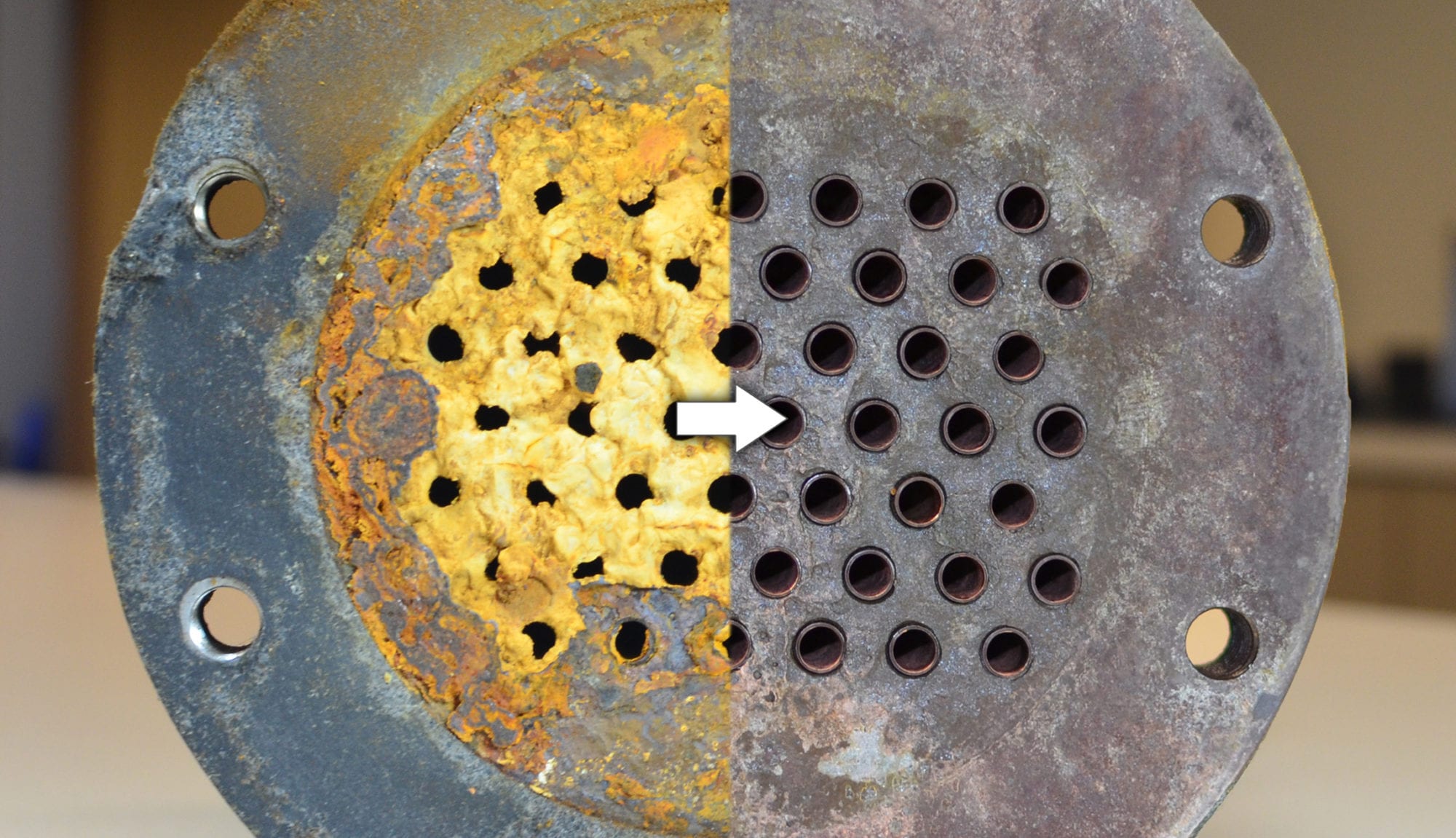
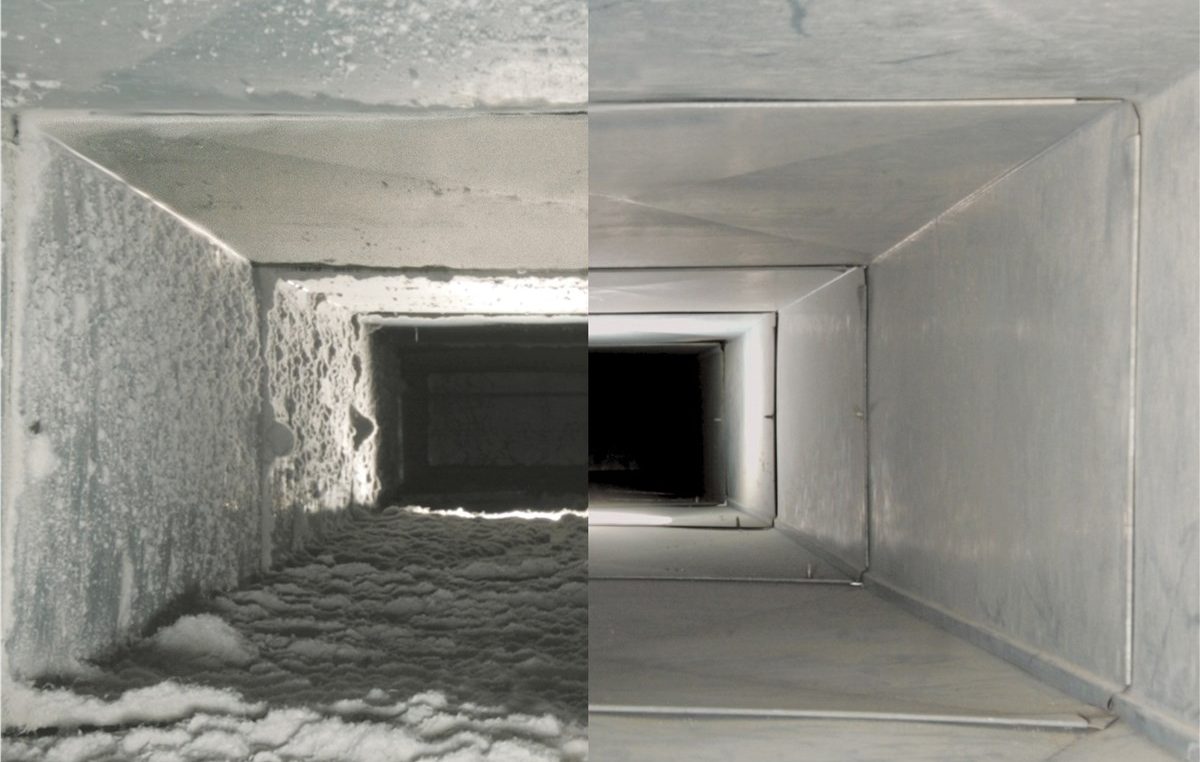
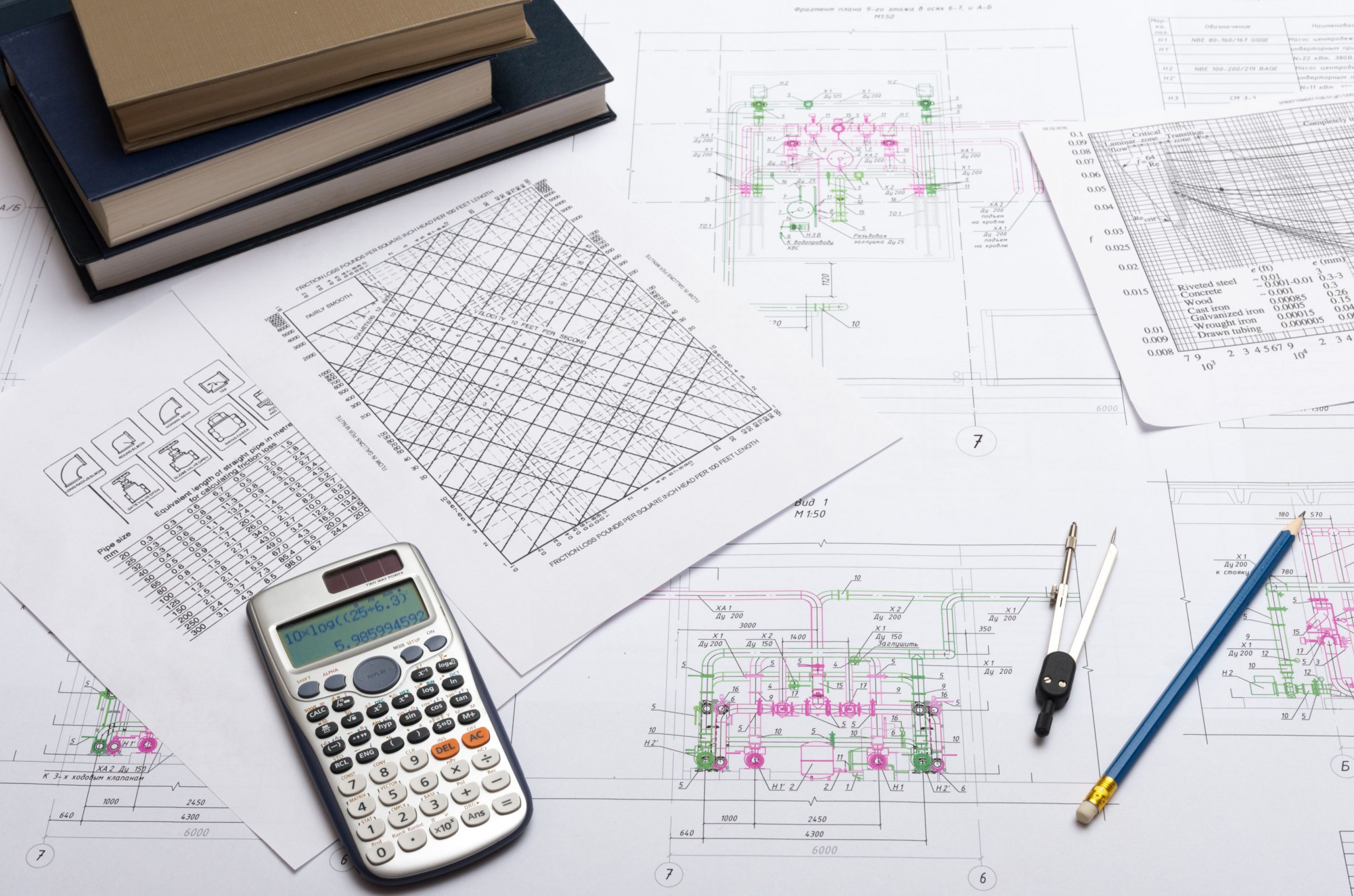

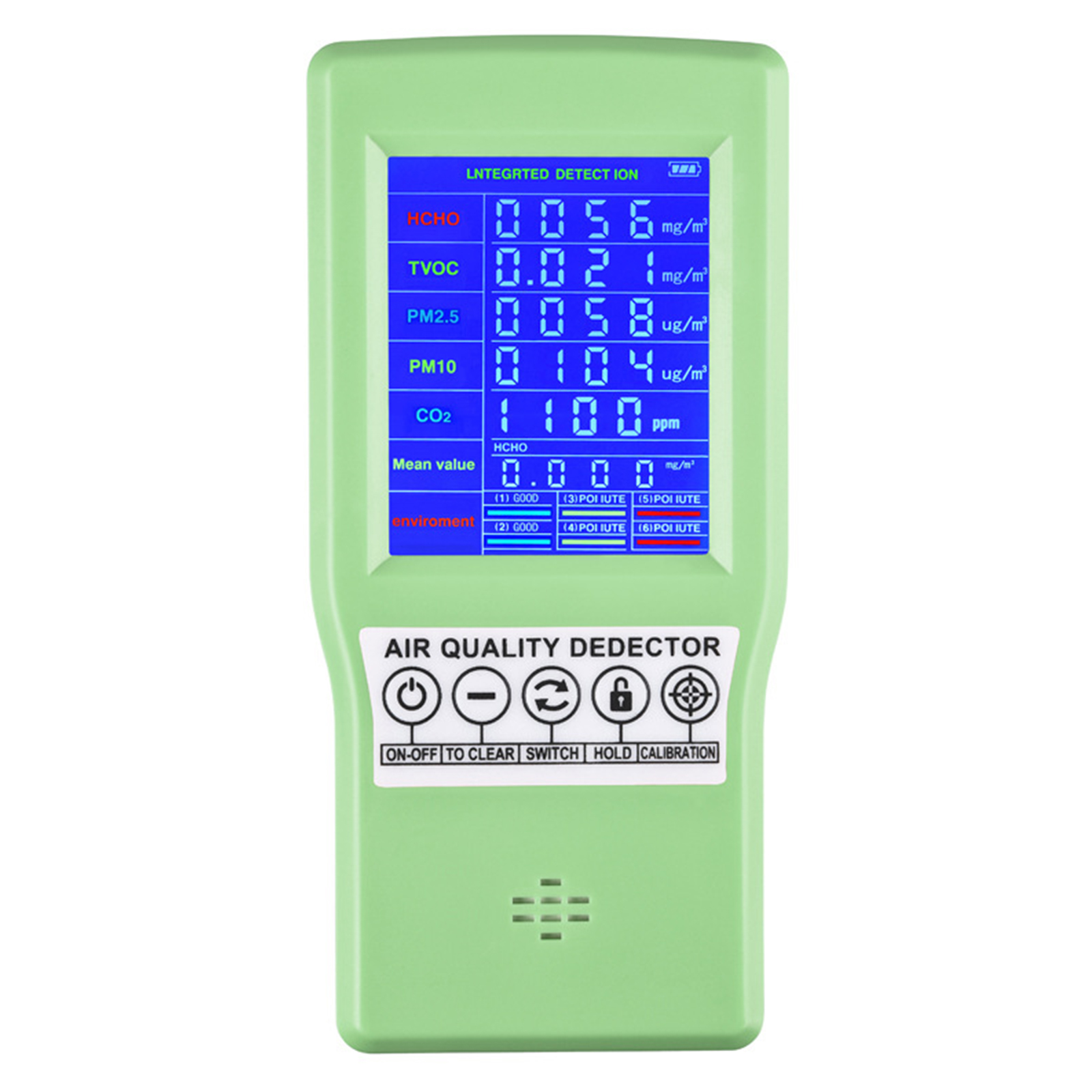
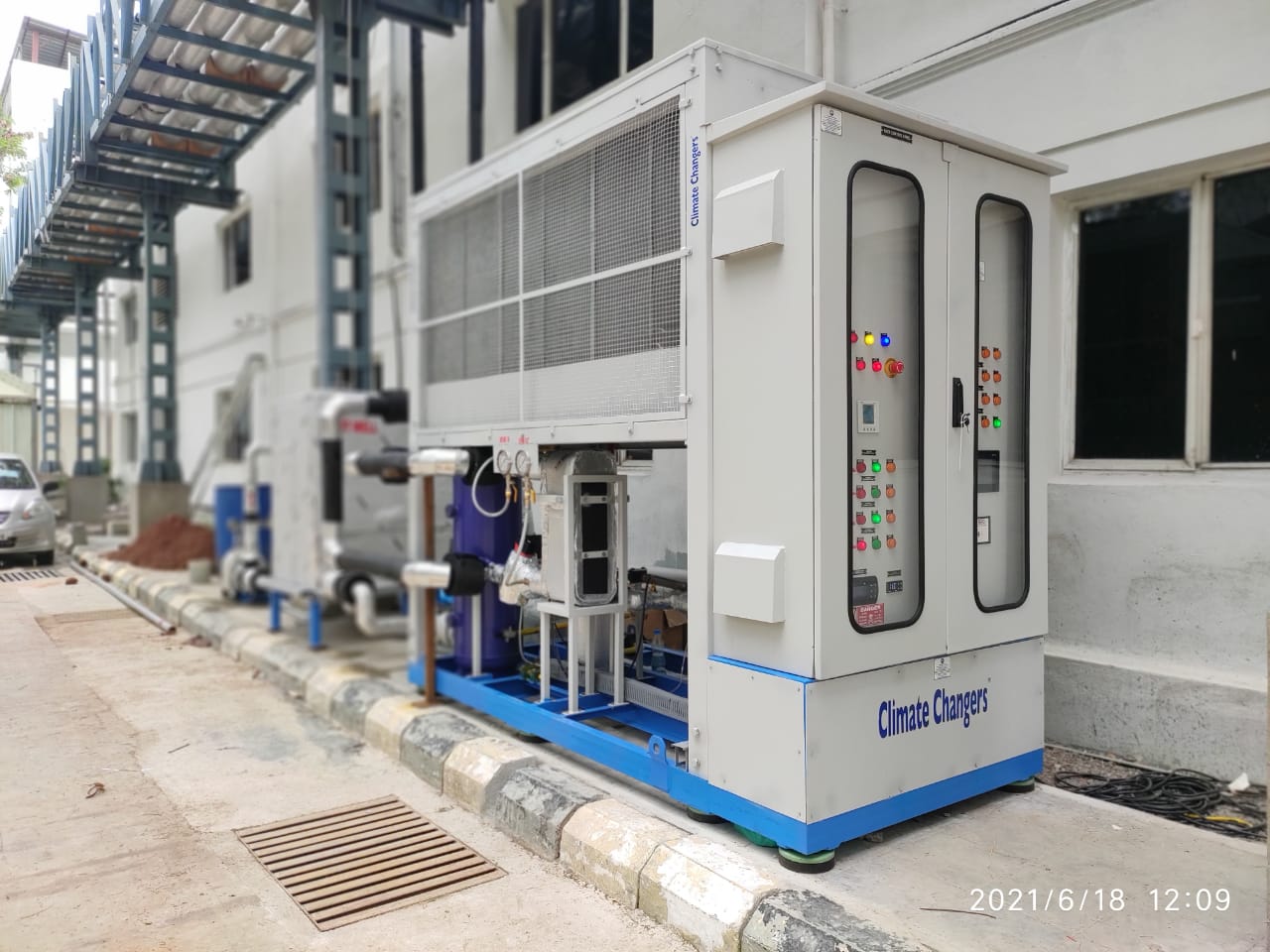
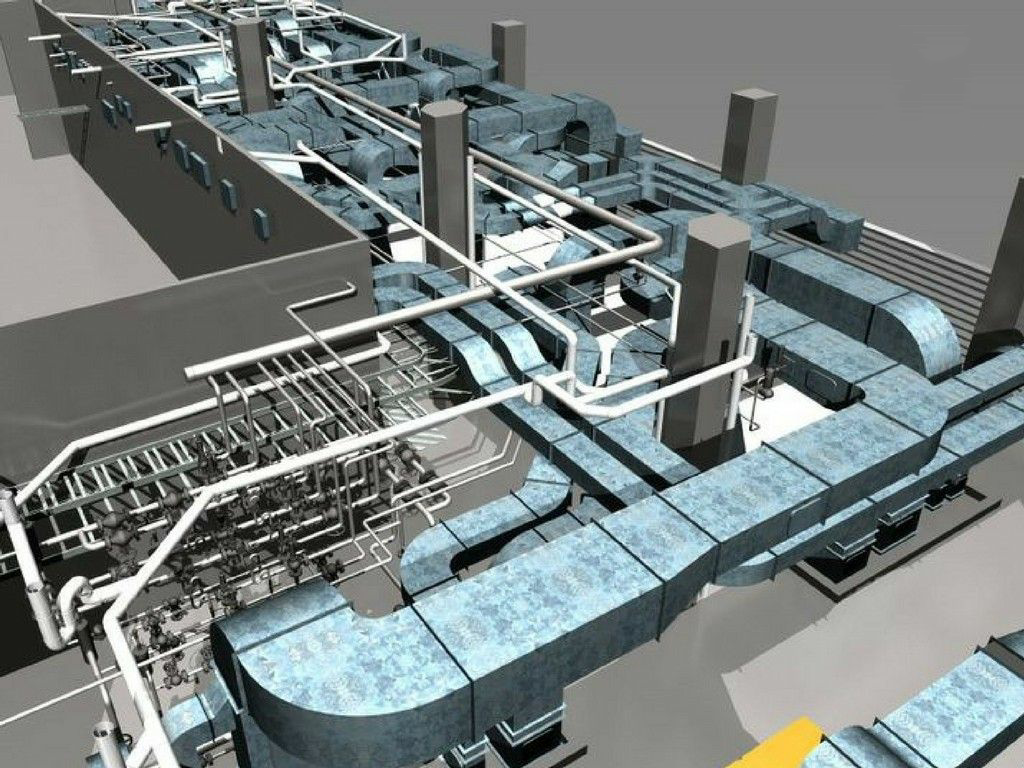
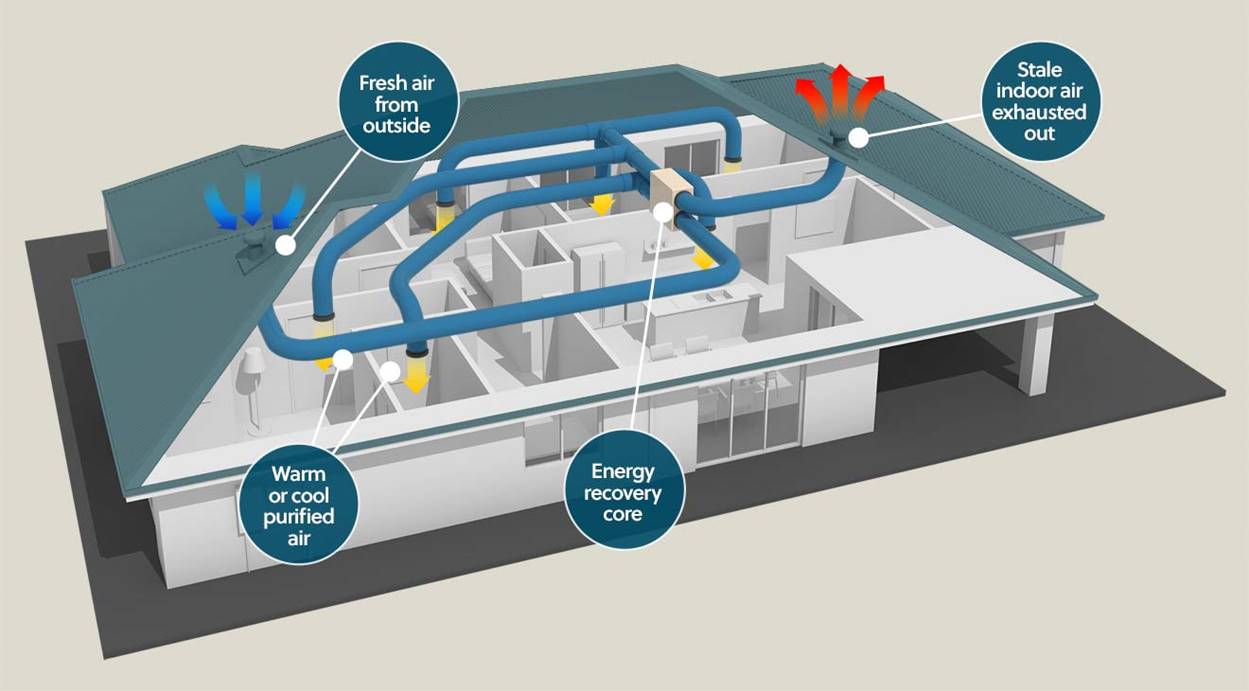
Chemical Treatment
Reduce Scale or Fouling
Failure of the heat exchanger tubes is costly and disruptive. The evaporator and condenser tube bundles collect mineral and sludge deposits from the water. Scale buildup promotes corrosion that can lead to the failure of the tube wall. Scale buildup also insulates the tubes in the heat exchanger reducing the efficiency of the chiller.
Condenser tubes should be brush cleaned at least annually, or per your demand maintenance schedule to keep them free of contaminants.
Cooling-tower water must be regularly treated, generally with chemicals, to prevent the growth of harmful bacteria, minimize corrosion, and inhibit the buildup of scale (mineral deposits) on the fill.
We offer a comprehensive range of Cooling Water Treatment –
- Cleaning chemical – neutral pH cleaner
- Scale/ Corrosion inhibitors
- Dispersants
- Effective biocides for algae/ microbiological control
Cleaning of AHU Coils / Evaporator
The Problem: Contaminated Evaporator/Condenser, AHU Coils
- Dirt, Soot and Grimy Deposit
- Oxide Film Build-up
- Reduced Air-flow
- Lower Cooling Efficiency
- Reduced Evaporator / Condenser Life
- Frequent Compressor Failure
- Increased Energy Consumption Per Ton of Refrigeration
Both condenser and Evaporators needs to be cleaned by using pressurised water and if required detergents.
A biodegradable, alkaline coil cleaner with a foaming component can be used if required . Also mold and mildew inhibitors that contain any growth and improve indoor air quality can be used to treat indoor coils after cleaning. It is beneficial for cleaning and removing of dirt, solid cementious deposits, carbon, etc from AHU coils.
Air Duct Cleaning
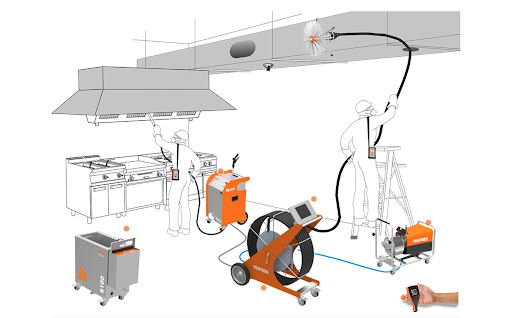
Dust and debris accumulate in the air ducts of your HVAC system. However, the process of air duct cleaning is much more complicated than dusting your furniture.
Benefits of Duct Cleaning:
- Increased Energy Efficiency : When your ducts are clean, your system doesn’t have to work as hard to heat and cool your household.
- Odor Removal : Lingering odors that have become trapped in the ducts will be completely eliminated.
- Reduced Debris : Our services dramatically reduce the amount of dirt and debris that is lurking in your duct system, leaving your family with cleaner, purer air.
- Fewer Allergens : A professional and thorough cleaning of your ductwork will noticeably decrease the allergy triggers in your home.
Design
Using our expertise in HVAC design and installation, we will analyze your size and load requirements and recommend the right system for your commercial space. When we install your new system, you will probably notice a sharp decrease in your overall heating and cooling costs, since the brands we supply are designed with energy efficiency in mind.
While buying a new HVAC unit entails an up-front cost, over time you’ll benefit from significant cost savings because your business uses less energy. We make sure that the system is installed to run at peak efficiency, prolonging the life of your new investment while saving you money.
Factors considered While Designing :
- Space Size
- System Type
- Building Position
- Internal Temperature Factors
- System Size
- System Efficiency
- The Condition Of Your Ductwork
- Cost
- Indoor Air Quality Needs
Space Size
Commercial properties can take up a lot of power to meet their cooling and heating needs. To prevent energy waste and short cycling, you need the right size equipment for your company premises. The larger your facility, the greater the chance that you may need more than one HVAC system.
An experienced HVAC technician will carry out a load calculation to determine the right size and/or number of units for your building. This process evaluates all the property’s characteristics to determine how much cooling and heating will be needed to meet your comfort requirements.
System Type
There are several types of HVAC systems used in commercial buildings today, many of them different from those used in residential applications. Here is a summary list of the various options that may suit your needs, depending on your building size and configuration.
Single-split systems are popular choices for small offices, shops, cafes, server rooms, and other smaller spaces. They consist of interior and exterior units connected by a copper pipe. The indoor unit cools or heats ambient air using an appropriate heat exchanger while the outdoor unit dissipates the heat and lets refrigerant flow back into the indoor unit.
Multi-split systems consist of several indoor units connected to one larger outdoor unit. They are often used in places with multiple floors, large rooms, and/or different climate zones. A higher-capacity air conditioner can be installed in a product showroom while smaller and quieter ones run in your office and the reception area. This allows you to control the temperature in the building on a room by room basis.
Variable refrigerant flow (VRF) or refrigerant volume (VRV) systems is a heat pump that uses refrigerant in the cooling and heating lines. Mulvariable tiple evaporators connect to one condensing unit. These systems are common in medium to large spaces and come in two varieties: heat pump systems that provide either heating or cooling and heat recovery systems capable of both heating and cooling.
Variable air volume (VAV) or constant air volume (CAV) systems use a setup with a single-duct supply and return and use varying airflow or constant airflow to keep temperatures at set points. These systems are often seen in single-zone buildings and are less expensive to install than some others.
System Efficiency
An energy-efficient HVAC system will lead to high savings on your electricity bill. To identify the most cost-effective solution, check the following ratings for each unit being considered:
EER: Energy Efficiency Ratio, or EER, is a ratio derived from dividing a system’s cooling output (measured in Btu, or British thermal units) with the energy used in watt-hours. For example, an air conditioner with a 12,000 Btu that uses 1,200 watts of electricity has an EER of 10. The higher the EER, the more energy-efficient the system is. In Nevada, minimum EER rating is 12.2 for units less than or equal to 3.5 tons and 11.7 for systems equal to or more than 4 tons.
SEER: Seasonal energy efficiency ratio, or SEER, indicates the energy-efficiency of air conditioners and heat pump cooling functions. The higher the rating, the more efficient the equipment is.
HSPF: The heating seasonal performance factor, or HSPF, deals with the heating processes of HVAC heat pumps. A high-efficiency system will have an HSPF of at least 8.2.
AFUE: Annual fuel utilization efficiency, or AFUE, covers heating system efficiency ratings of heating systems. It indicates how much energy in the fuel used by the system is transformed into usable heat. The higher the number, the more efficient the system. For example, a furnace with an AFUE of 90 turns 90% of its fuel into heat.
Energy Star: Designed by the Environmental Protection Agency, the Energy Star rating verifies a product’s energy efficiency. Any HVAC system marked with its logo has met a series of strict requirements during testing by a neutral third party.
The Condition Of Your Ductwork
Before installing a new HVAC system, we need to confirm that your ductwork is in good condition, as aged or inefficient ducts can leak up to 20% of cooled air. An HVAC technician can check your duct system and advise whether renovations, improvements, or adjustments are necessary before your new system can be installed. Older buildings, in particular, may need brand new ductwork while a remodelled or renovated commercial property could need custom ductwork for the HVAC system design to be ventilated properly.
If there is no centralized ductwork in your building, you’ll need to decide whether you want to invest in ducts or install a ductless system.
Cost
Once you confirm your budget for the installation, we start collecting estimates for the following categories of the install:
- Equipment
- Controls
- Ductwork and piping
- System start-up
While cost is an important consideration, remember that it’s not the only one. Many business owners automatically select the lowest estimate to save money on upfront costs, only to find themselves spending more money in the long run because the resulting system or installation did not meet their needs. When you work with an HVAC company that helps you properly size your system and provide one that delivers maximum energy efficiency, you will save more and avoid unnecessary future expenses.
Indoor Air Quality Needs
For many businesses, indoor air quality is an important factor when choosing an HVAC system. Cleaning chemicals, paint fumes, and even allergens such as dust can all lead to employee illness and diminished productivity. Other examples of special air quality needs include:
- Special humidity maintenance
- Special temperature maintenance
Get Ready for Summer!
These factors are only some of the determinants that can guide your final decision. Once you select and install a new commercial HVAC system, one of the best ways to leverage its energy-efficiency is to use a smart thermostat. These controls, which are highly versatile and sophisticated these days, can prevent energy from being wasted by allowing you to set daily, weekly, or even weekend usage schedules.
At The ChillBreeze, we can show you additional ways to get the most out of your purchase for many hot summers to come, so be sure to ask.
Energy Auditing
An HVAC Energy Audit Company is required to reduce operational expenditure, decline in wear and tear on equipment, longer equipment life all culminating in a better working environment. To achieve this, we need to conduct an HVAC Audit.
Next, to lighting, HVAC is the largest energy user in a building, so improvements in the HVAC system can significantly lower the total energy bill – by up to 40 percent. HVAC Audit tells about equipment performs and how much energy HVAC system consumes. Once consumption pattern is available, an HVAC Audit Company can compare against upgrade options, get ROI estimates, and make informed decisions.
Benefits Of HVAC Audit
Equipment performance can be greatly improved with an audit e.g. easy things like changing filters on time can save electricity and save an air-handler from premature failure. Also, HVAC Audit can save Energy in terms of:
- Adding variable speed drives to chillers and other big load HVAC equipment.
- Appropriately sizing of the fans
- Adjusting controls (changing set points due to cyclical seasons) or upgrading them.
- Optimizing ventilation according to the capacity utilization
- An HVAC Audit can also help in identifying worn motors, leaky valves, inefficient compressors, ineffective heat exchangers, and inefficiencies in the fuel/energy process
- Identifying HVAC equipment running less than their optimal efficiency
The building environment is constantly changing: seasonal temperatures, building upgrades, office space use, number of occupants, etc. An audit will quickly identify if your system is updated and tracking to all of these changes.
When To Do An HVAC Audit?
A routine audit should be done at least once every 12 months by a professional HVAC Audit Company.
However, it is recommended to perform an audit whenever you find inefficiencies on a daily or weekly basis e.g. long boiler runtimes, water loss, steam leaks, high stack temperatures, etc. An HVAC Audit Company will look at these areas, triggering alerts to crucial issues, documenting results, and maintaining useful historical records.
Also, the basic changes to be done quarterly to monitor the energy use of key components such as chillers, boilers, air handlers, etc.; ensuring the correct operation of dampers, condition of filters, and ventilation rates; etc. Also, it is advisable to maintain an inventory of information – equipment age and size, make/model, maintenance schedule, dates of any upgrades as a ready input for an HVAC Energy Audit Company.
ChillBreeze is a complete HAVC Solution provider in India contributing to various HVAC related issues including HVAC Audit to save energy cost for its clients.
Indoor Air Quality Checking
There are variety of ways to keep your home comfortable for everyone in your family. Main aim is to ensure that your air stays cleaner so that allergies are kept at bay and the air is humid enough during the winter months.
IAQ checking is done to know the quantity Contaminants present in air.
WHY INDOOR AIR QUALITY IS SO IMPORTANT
Today, homes are better insulated and sealed than ever, meaning your family might be breathing indoor air that’s less healthy than what’s outside.
- Indoor pollutants can be five times higher than outdoor pollutants.
- 87% of homeowners are unaware that pollution inside their homes may be worse than outside.
- Children inhale 50% more air per pound of body weight than adults, so they’re especially sensitive to air quality problems.
- Up to 72 trillion allergens can find their way into your home on a daily basis.
- The average home can produce up to 40 pounds of dust a year.
CLEAN AIR ADVANTAGES
- Reduce certain viruses and bacteria
- Remove unhealthy viruses and bacteria.
- Limit exposure to lung and skin irritants.
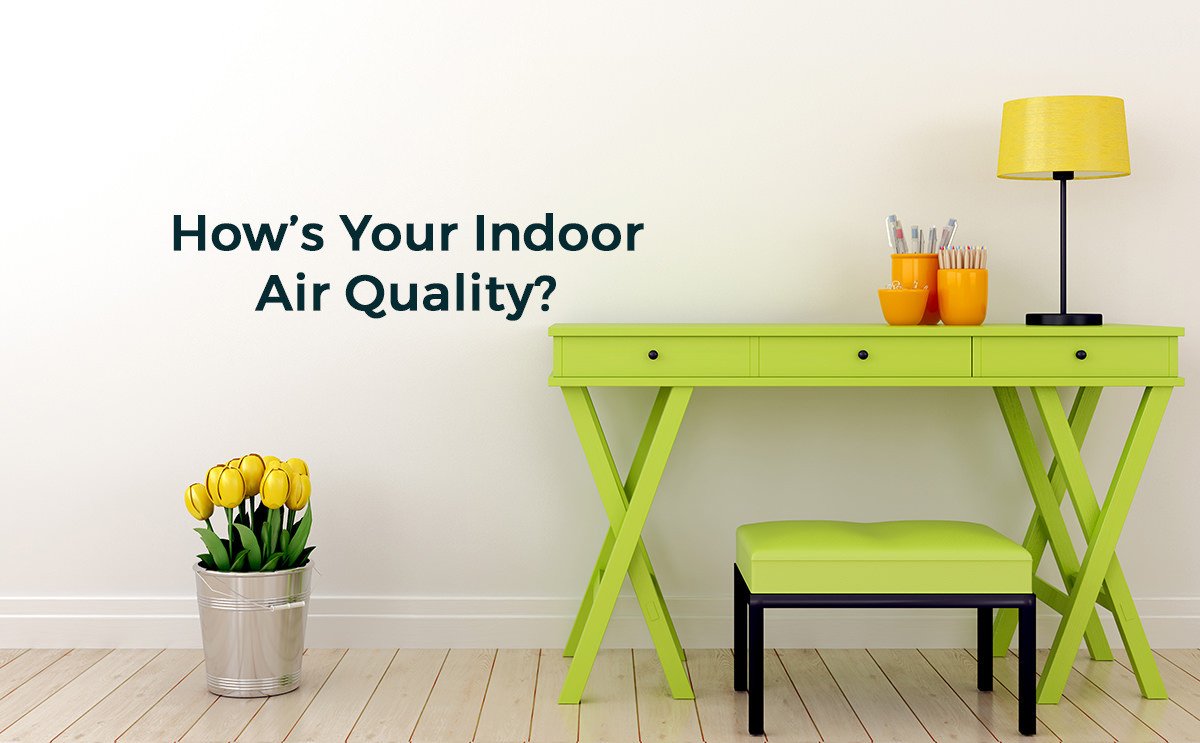
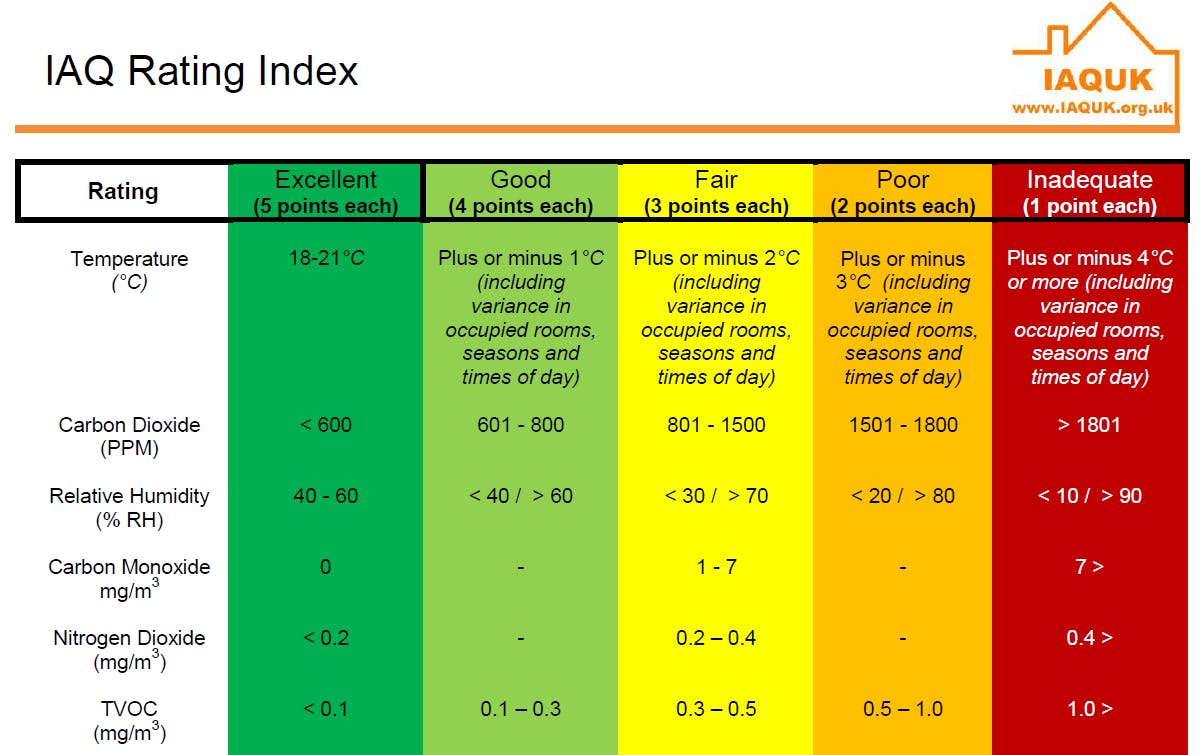
Some of the Methods for maintaining good IAQ
Air Cleaners : Remove up to 99.98% of airborne irritants.* Good for:
- Families with allergies and asthma
- Removing dust, pollen and more
- Reducing smoke & odors
Filters : Remove common irritants like dust, pollen and pet dander. Good for:
- Pet owners
- Removing dust, mold, pet dander and more
Humidifiers & Dehumidifiers : Keep your indoor air at the proper humidity level all year round. Good for:
- Hydrating skin
- Preventing moisture damage
- Limiting bacteria, mold and certain viruses
Ventilators : Circulate fresh air into your home. Good for:
- Year round fresh air
- Removing indoor air pollutants
Cleaner : Reduce airborne irritants like pollen, dust, pet dander, hair, mold, smog, tobacco smoke, odors and more.
Healthier : Cleaner air can limit your exposure to certain viruses, bacteria and irritants that can trigger asthma, allergies, respiratory infections and certain skin conditions.
Defend : Control moisture that can affect wood floors and furniture and make it harder for harmful contaminants like mold and bacteria to spread.
Custom made Accessories and Equipments
- We are proud to say we are part of Make In India Mission.
- We have partnered with Bangalore Based OEM in production of Custom Made chiller equipments suitable for your needs. Our equipments contains Branded parts form Danfoss, Bock, Emerson etc. Chillers of any capacity can be ordered with us.
- We also supply Brazed spare parts and hydraulic hoses required for Data center and server cooling applications .
- Any of the custom accessories required for HVAC application can be enquired with us.
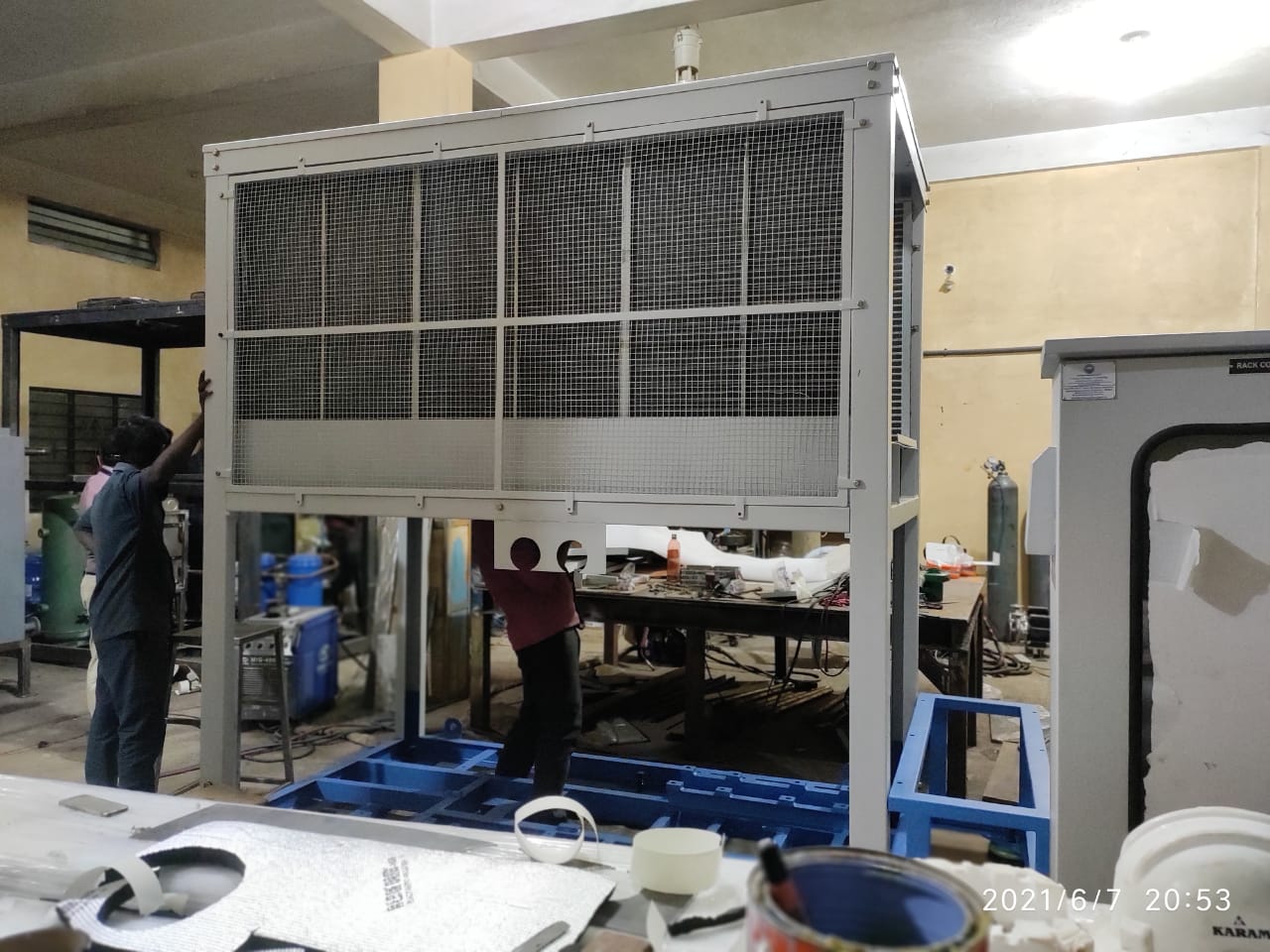

Ventilation
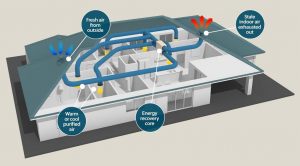
As buildings become more airtight to save energy, an unintended consequence is an accumulation of internally generated contaminants that cause deficient indoor air quality (IAQ). Deficient IAQ is a serious problem in all buildings since it negatively impacts indoor occupants’ health, cognitive function, productivity and wellbeing.
Indoor air in residences can be quite unhealthy. In fact, Environmental Protection Agency (EPA) states that:
- The average person receives 72% of their chemical exposure at home.
- Indoor levels of pollutants may be two to five times – and occasionally more than 100 times – higher than outdoor levels.
- High amounts of indoor air pollutants are of particular concern because most people spend about 90% of their time indoors.
- Indoor air pollution is a top-five environmental risk to public health.
- Deficient IAQ has many adverse effects. They include short-term health problems, such as allergies, headaches and asthma, as well as long-term ones, such as cancer, liver disease and kidney damage.
Mechanical Ventilation is the Solution
The best way to enhance IAQ is via increased and balanced ventilation. As long as enough controlled fresh outdoor air is coming in and stale indoor air is exhausted out, a high-quality indoor environment will be achieved. Proper ventilation is essential for keeping the air fresh and healthy inside homes.
Ventilation is so vital for ensuring acceptable IAQ for homes that the American Society of Heating, Refrigerating and Air-Conditioning Engineers (ASHRAE) created Standard 62.2, which sets ventilation requirements for removing indoor air contaminants from homes. ASHRAE sets the ventilation rate at 7.5 CFM per person, plus 3 CFM per 100 square feet.
Building Information Modeling
Building Information Modelling (BIM) is the holistic process of creating and managing information for a asset to be Built and a built asset too.
There are five significant benefits of BIM in the design and construction process:
- Cost and resource savings.
- Greater efficiency and shorter project lifecycles.
- Improved communications and coordination.
- More opportunities for prefabrication and modular construction.
- Higher quality results.

